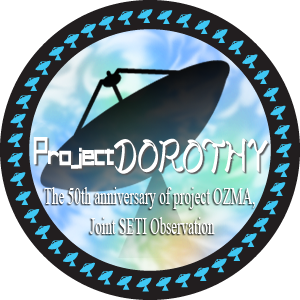Observations to test the system are ongoing at Chilbolton, both when the station is linked to the full LOFAR array and controlled from ASTRON, but also with it running in its "standalone" mode, (ie. controlled locally, and using it as a single telescope).
At the end of last week observations were run in standalone mode to test some new parameters. The lastest tests involved pointing at three different places in the sky at once (using the multi-beam capacity - since LOFAR stations are pointed entirely in software, by adding three sets of different delays in the antennas can be used to point 3 places at once), and also testing if data could be taken at 1 Hz frequency resolution across a full band 36 MHz wide.
This kind of data will be useful for all sorts of observations in single station mode, but in particular this observations was used as a dry run for SETI observations as part of Project Dorothy.
The aims of Project Dorothy (for a nice description of the goals and some quotes from Frank Drake here) are to co-ordinate world-wide observations of nearby stars with planetary systems to search for signals of possible extra-terrestrial origin.
In practice the observations last week were no different from any other kind of commissioning (or test) observations which have been run at Chilbolton, except that the time and targets were set to co-ordinate with Project Dorothy at the request of the LOFAR-UK SETI group.

You can read a few more details on what was actually observed at the KAIRA (LOFAR-Finland) blog: http://kaira.sgo.fi/2011/03/testing-seti-with-lofar.html
ReplyDelete